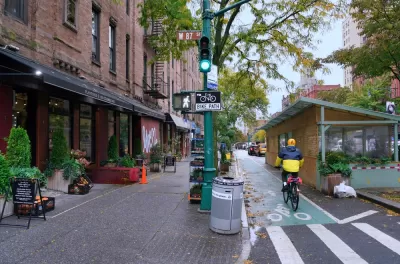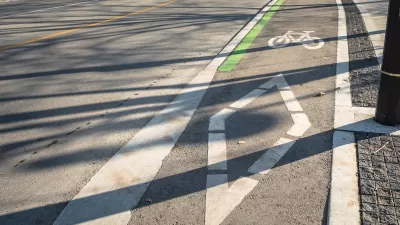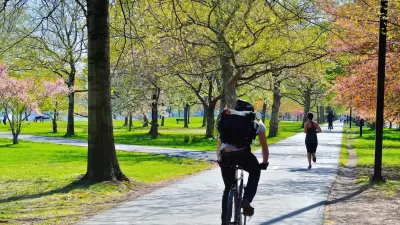Cyclists across the state resoundingly called for more safe bike infrastructure and trails, citing a lack of bike lanes as a top reason for not riding more.

Results of the New York Cycling Census indicate that, unsurprisingly, cyclists say better bike lanes and other safe bike infrastructure encourage more people to bike, writes Dave Colon in Streetsblog NYC.
“The need for safe bike routes to make cycling more popular might seem like an obvious solution to anyone who’s deep in the street safety fight, but one of the architects of the survey said that the results help make the case that every part of the state should make cycling infrastructure a priority.”
Across all New York counties, respondents expressed “overwhelming demand” for more bike infrastructure, according to the census. The census, which received 13,740 responses, was one of the largest U.S. bike surveys ever conducted. “The survey found that the top three reasons people rode their bike were for fitness (21 percent), fun (21 percent) or mental health (19 percent), and that the top three trip types on bikes were recreation (28 percent), exercise (27 percent) and commuting (17 percent).”
The authors note that data on specific reasons why people ride or don’t ride bikes can be a useful tool for policymakers and advocates, “as it allows for a new way for governments to figure out how to build bike-friendly communities.”
FULL STORY: “Cyclists Statewide Agree: More Bike Lanes Means More People On Bikes

Manufactured Crisis: Losing the Nation’s Largest Source of Unsubsidized Affordable Housing
Manufactured housing communities have long been an affordable housing option for millions of people living in the U.S., but that affordability is disappearing rapidly. How did we get here?

Americans May Be Stuck — But Why?
Americans are moving a lot less than they once did, and that is a problem. While Yoni Applebaum, in his highly-publicized article Stuck, gets the reasons badly wrong, it's still important to ask: why are we moving so much less than before?

Using Old Oil and Gas Wells for Green Energy Storage
Penn State researchers have found that repurposing abandoned oil and gas wells for geothermal-assisted compressed-air energy storage can boost efficiency, reduce environmental risks, and support clean energy and job transitions.

San Antonio Remains Affordable as City Grows
The city’s active efforts to keep housing costs down through housing reforms and coordinated efforts among city agencies and developers have kept it one of the most affordable in the nation despite its rapid population growth.

What Forest Service Cuts Mean for Cities
U.S. Forest Service employees work on projects that have impacts far beyond remote, rural wilderness areas.

North Texas Transit Leaders Tout Benefits of TOD for Growing Region
At a summit focused on transit-oriented development, policymakers discussed how North Texas’ expanded light rail system can serve as a tool for economic growth.
Urban Design for Planners 1: Software Tools
This six-course series explores essential urban design concepts using open source software and equips planners with the tools they need to participate fully in the urban design process.
Planning for Universal Design
Learn the tools for implementing Universal Design in planning regulations.
Heyer Gruel & Associates PA
City of Moreno Valley
Institute for Housing and Urban Development Studies (IHS)
City of Grandview
Harvard GSD Executive Education
Salt Lake City
NYU Wagner Graduate School of Public Service
City of Cambridge, Maryland





























